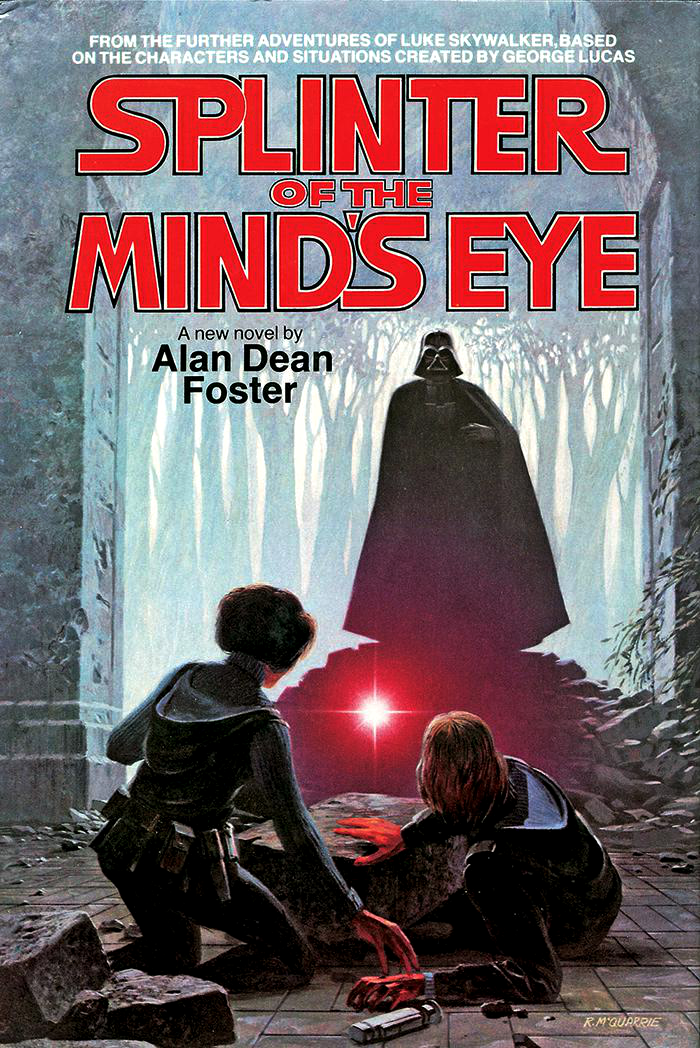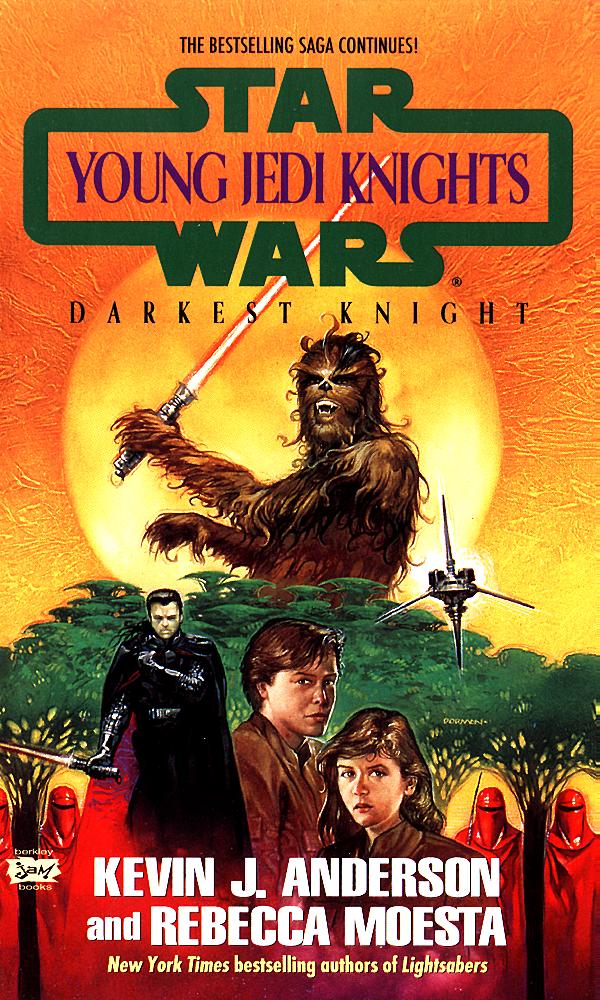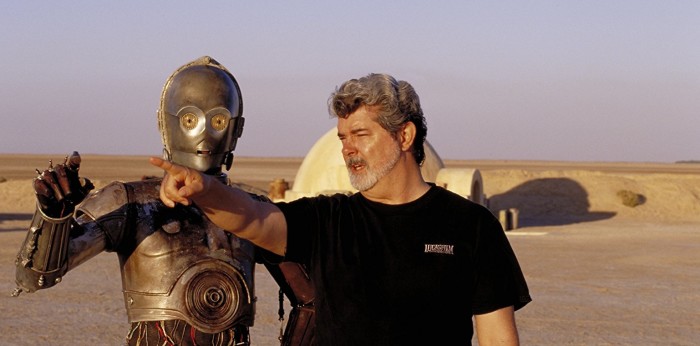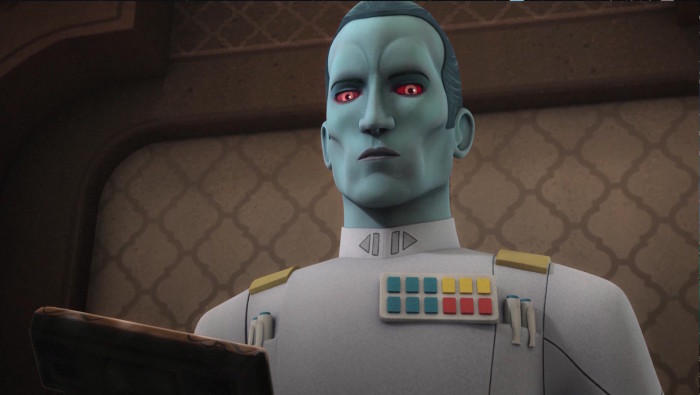A Brief History Of The 'Star Wars' Universe That Once Was
A long time ago, in a galaxy far, far away there was a very special place where countless books, comics, and video games all lived under the same canon. Spanning millennia, these tales allowed your favorite space opera to live on and grow outside of the films you know and love. It was a world where your most beloved heroes had children and most hated villains had entire art galleries dedicated to poor souls trapped in carbonite. It was a wild space where anything was possible... Boba Fett even lived!
For over 35 years, it was the playground of Star Wars fans and creators alike. Welcome to the Star Wars Expanded Universe.
The Beginning
George Lucas' Star Wars was a cultural phenomenon like no other. The film went from an unpromising release to a critical and commercial smash that overtook Jaws to become the highest grossing film of all time. So it's unsurprising that fans were desperate for more of the imaginative galaxy that Lucas had created. And in the rush to answer that call, the Expanded Universe (EU) was born. Though there was a Star Wars novelization published by Del Rey (who still produce and publish canon Star Wars books to this day), the first widely recognized EU book is Splinter of the Mind's Eye by Alan Dean Foster in 1978. Set between A New Hope and The Empire Strikes Back, the story focuses on Luke and Leia as they hunt down a mysterious force sensitive gem that's in the grip of the Empire, drawing from an early script for A New Hope.
The EU had begun and it blossomed over the years. Arguably, it wasn't until a decade later and the arrival of three new pieces of mixed media canon that its full crossover potential was truly discovered. The spark that ignited the EU fire was Star Wars: The Roleplaying Game in 1987, which heralded a level of detail and background that had previously been unseen in the canon. Next came Dark Horse's seminal Dark Empire comics. Set directly after main trilogy, they turned the galaxy on its head by introducing a Luke Skywalker who'd fallen to the Dark Side. The final key was Timothy Zahn's Heir to the Empire, the first of his so called Thrawn trilogy. Marketed as the official sequels to the classic Star Wars movies, the series was a massive success and led to an explosion in the world of Star Wars fiction.
The Stories
It would be impossible to cover every single EU title here, but there were certain stories that stood out, series that stood the test of time and made a huge impact on millions of fans. Timothy Zahn's Heir to the Empire was a powder keg, quickly becoming a New York Times bestseller, and is still to this day seen as the peak of what the EU had to offer. Set five years after the end of Return of the Jedi, the book introduced a new foe for our favorite heroes, a blue skinned strategic genius named Admiral Thrawn... and we'll get back to him later.
The book showcases some of the things that the EU did best. The novel format gave space for the characters to have interactions and experiences that 100 minutes on screen would never allow. Heir of the Empire introduced a number of key parts of EU canon. Aside from Thrawn, it also introduced Mara Jade, who would later become Luke Skywalker's wife and the mother of his child, Ben Skywalker. Yup, Ben. You heard that right. Zahn also debuted two characters who'd become a central part of the EU canon: Princess Leia's unborn twins.
Jaina and Jacen Solo – two of Han Solo and Leia Organa's three children – were first hinted at during Heir of the Empire, but would later become the leads in a 14-story series called Young Jedi Knights. Again, this series showcased the vast breadth of storytelling potential that the EU gave creators and fans alike. It introduced the pair and their friends – including Chewie's nephew, Lowbacca – as they trained under Luke Skywalker to become the next generation of Jedi. Though the books were all released within three years, Kevin J. Anderson and Rebecca Moesta crafted an expansive piece of Star Wars fiction that attracted a whole new generation of fans. Just like Heir of the Empire, this series would end up shaping the future of the Star Wars franchise.
After decades of the Empire being the primary foe in the world of Star Wars, the overlords of the EU decided to shake it up by introducing the Yuuzhan Vong. A rare alien species from outside of the galaxy, the Vong were a brutal, evangelical culture who enacted a prolonged invasion on the galaxy and the Republic. Under the banner of The New Jedi Order, this storyline ran from 1999-2003 and took place under the strict eye of George Lucas after being planned by Lucasfilm, Dark Horse, and Del Rey. Taking place over 19 books, three short stories, and three online novellas, the huge event saw multiple characters from the main Star Wars canon and Expanded Universe teaming up to fight the invaders.
How Did it Work and Why Does it Matter?
The Expanded Universe was overseen by George Lucas under the rule that he could take whatever he wanted from the stories and make it canon, as well as being able to retcon or contradict anything that occured within the EU. The level of oversight changed depending on the project or period, with events like The New Jedi Order having to fit strict continuity whilst others with less impact were just allowed to breathe and exist. When the videogame The Force Unleashed was in production, it became part of the EU and had to be vetted heavily and approved by Lucas himself as it introduced a huge new canon character: Starkiller, Darth Vader's secret apprentice.
For so many of us, the Expanded Universe was a massive part of our Star Wars fandom, allowing us to fill the gaps in between rewatches. It gave us a place where our favorite characters could live outside of the rigorous constraints of three blockbuster movies, and then later three more. In that way, there's nothing else quite like the EU, a space where characters who might've otherwise just been a cameo lived entire lives, and where the ones we didn't want to leave behind were allowed to live on or even allowed to die. The strengths of the EU came from this universe-building, some of which was so strong that its impact was still felt when the Expanded Universe was officially de-canonized in 2014.
After the EU
When Disney purchased Lucasfilm, fans were terrified about what the notoriously controlling company would do with the sprawling back catalogue George Lucas left behind. Those fears were completely founded as Disney de-canonized the EU, creating the Legends banner to explain away the 30-plus years of history. But that wasn't the end of of the EU. Since Disney has restructured and relaunched the Star Wars universe, they've echoed many fan favorite stories in the new incarnations and brought in a particularly beloved villian from EU history.
Even if you haven't read any of the books mentioned above, you probably noted that some of the stories, ideas, or characters seemed familiar. That's because Disney, whether they know it or not, are taking some very direct influences from the EU in the new iteration of Star Wars. Princess Leia's twins were a huge part of the old canon, and when the time period of the The Force Awakens was announced, many fans assumed that the film would introduce Jaina and Jacen Solo. Obviously, those iterations of Han and Leia's children didn't happen, but we were introduced to their son, Ben Solo, who not only shares a name with Luke's EU son, Ben Skywalker, but Ben Solo's arc also looks very similar his EU counterpart, Jacen. Both boys train under Luke and both end up falling to the Dark Side. Ben Solo became Kylo Ren whilst Jacen became Darth Caedus, who was eventually killed by his own sister, Jaina.
Star Wars: The Clone Wars was created under the banner of the EU, but it was deemed canon-worthy by Disney. It stands alongside a one-shot Dark Horse comic, Darth Maul: Son of Dathomir, as the only EU stories to be part of the new canon. The Clone Wars was also a great place to experiment with some of the more outlandish ideas that the EU introduced, including Force magic, space witches, and Sith Inquisitors. Beloved characters like Ahsoka Tano even managed to avoid the cull by being a part of The Clone Wars universe. Disney's animated follow-up to the Clone Wars, Star Wars Rebels, has also been used to reintroduce a famous EU character who was thought lost forever on the proverbial cutting floor of Disney corporate: Grand Admiral Thrawn.
The blue-skinned bad guy introduced in Heir of the Empire all those years ago – who went on to star in multiple books, video games, and comics – was sorely missed by fans after it was announced he would be culled from canon. There were multiple fan petitions and campaigns, only for creator Timothy Zahn himself to come out and say in 2016 that fans needed to give up on any hope of seeing Thrawn return. But mere months later, it was announced that the Grand Admiral would be returning in the third season of Rebels. That made him the first official character brought back into canon by Disney. He also received a canon novel at the beginning of 2017, which was a fittingly strange moment in the journey of a character from a movie franchise who never appeared in any movies, who was in popular books that were disregarded, was then re-introduced in a TV show follow-up to a show that fit in with the disregarded books, and was then finally given a book that's officially in the world once again.
So there you have it, a very brief look back on construction and deconstructions of one of the most influential and important pop culture phenomenons of the past 40 years. The Expanded Universe shaped one of the biggest franchises in the world before being wiped from revised canon like a smear on a Corellian YT-1300 light freighter's window. If you love Star Wars and have yet to discover the EU, there's an entire forgotten reality for you to explore. Maybe it'll even give you some hints on where the franchise might be headed as it flies into the future.




